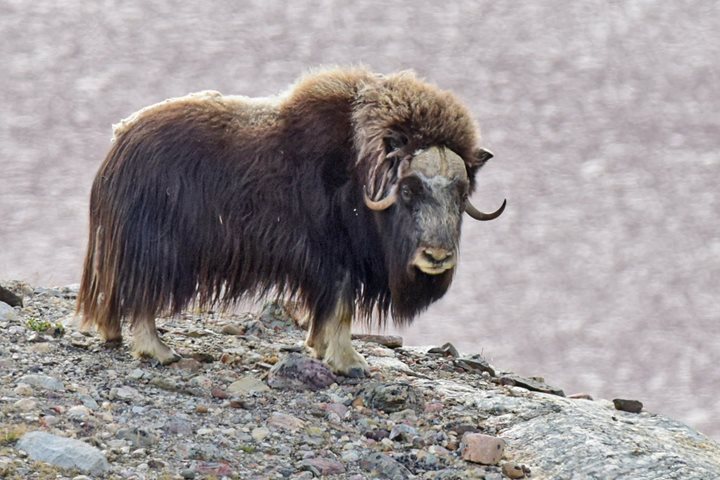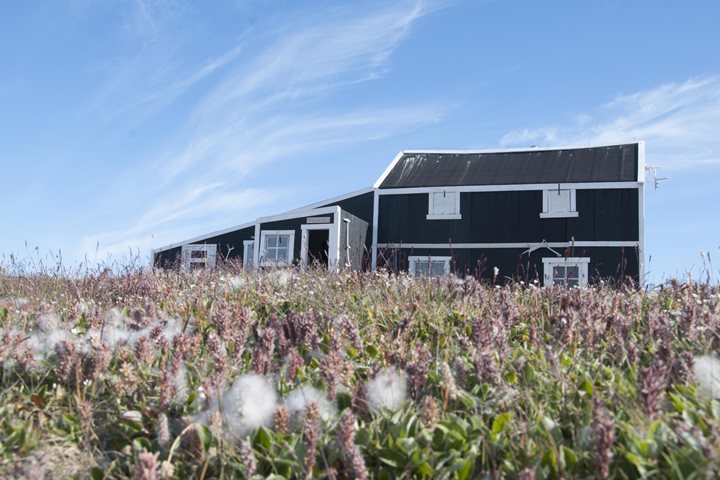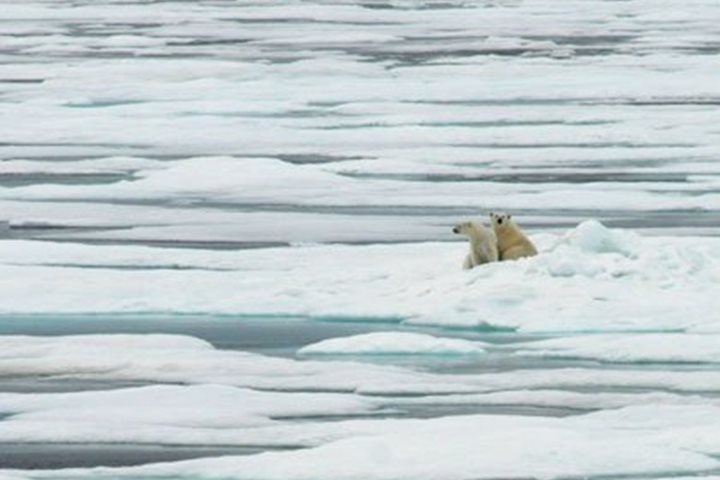We crossed the Arctic Circle towards the northernmost town in Greenland, which offers an ice-free port during the winter months. Sisimiut is also the southernmost location in Greenland where dog sleds can be used during winter and spring. We spent the morning sailing towards our afternoon destination, experiencing life-enriching events on our way.
As we sailed through the flat-calm North Atlantic, northern fulmars adorned the ocean’s surface with their reflections. Sporadic harp seals would break the surface in a random order, but quite consistently. As we scanned the flat horizon for wildlife, we spotted the largest animal that is known to science: a blue whale. There is no animal in our fossil record that surpasses this corpulent blue leviathan. Although we saw it a few times at a distance, the mere presence of such a mythical animal filled us with positive energy for the day that was just starting.
Just a few minutes after leaving the blue whale, two humpback whales were seen. National Geographic Explorer slowly approached, and to our surprise the whales did not mind our presence at all. In fact, they rolled around and in a very relaxed way seemed to interact with us, regardless of the contrast between their liquid world and our world of winds.
The multi-colored buildings that gave life to the distant tundra indicated that we were approaching the town of Sisimiut. Here we explored by foot, either the town or the wilderness, learning about people and natural history. We visited the fish market and admired the bone carvings that were offered for sale. Sled dogs were a novelty for us on this trip, due to our latitude. These dogs are not pets, but they could be described as partially wild animals that are about one-third wolf. In fact, some of these dogs are left on islands during the summer months, basically on their own. The owner will stop by to feed them seal meat or dog food every couple days. This allows for the hierarchies to settle, and basically for natural selection to play a role in selecting the best sled dogs, that work as a pack, with a leader that has legitimately earned its position.
As the divers came out of the water, just in front of the islet where the dogs are spending their summer, the pack gathered with curiosity and expectation of being fed. The spectacle was very similar to that of seeing a true pack of wolves in the wild.







